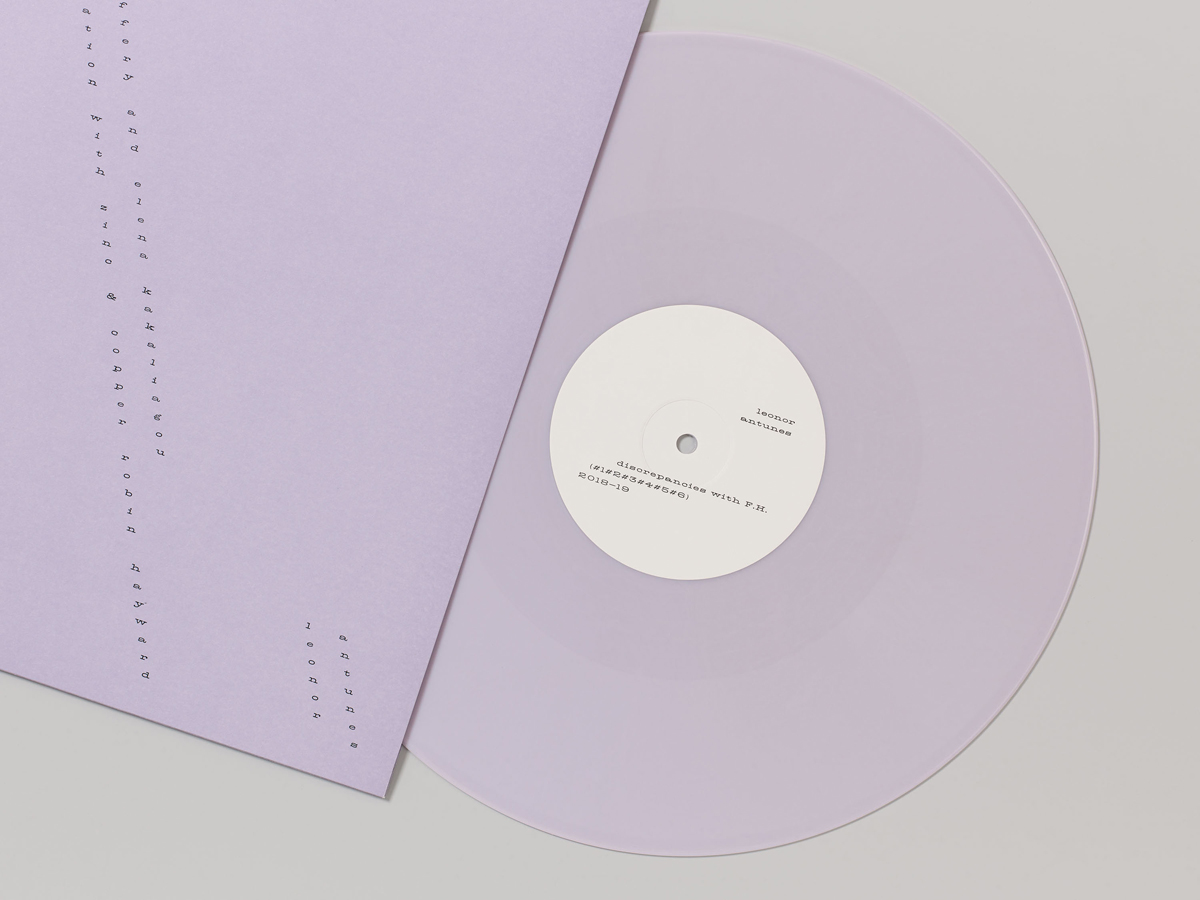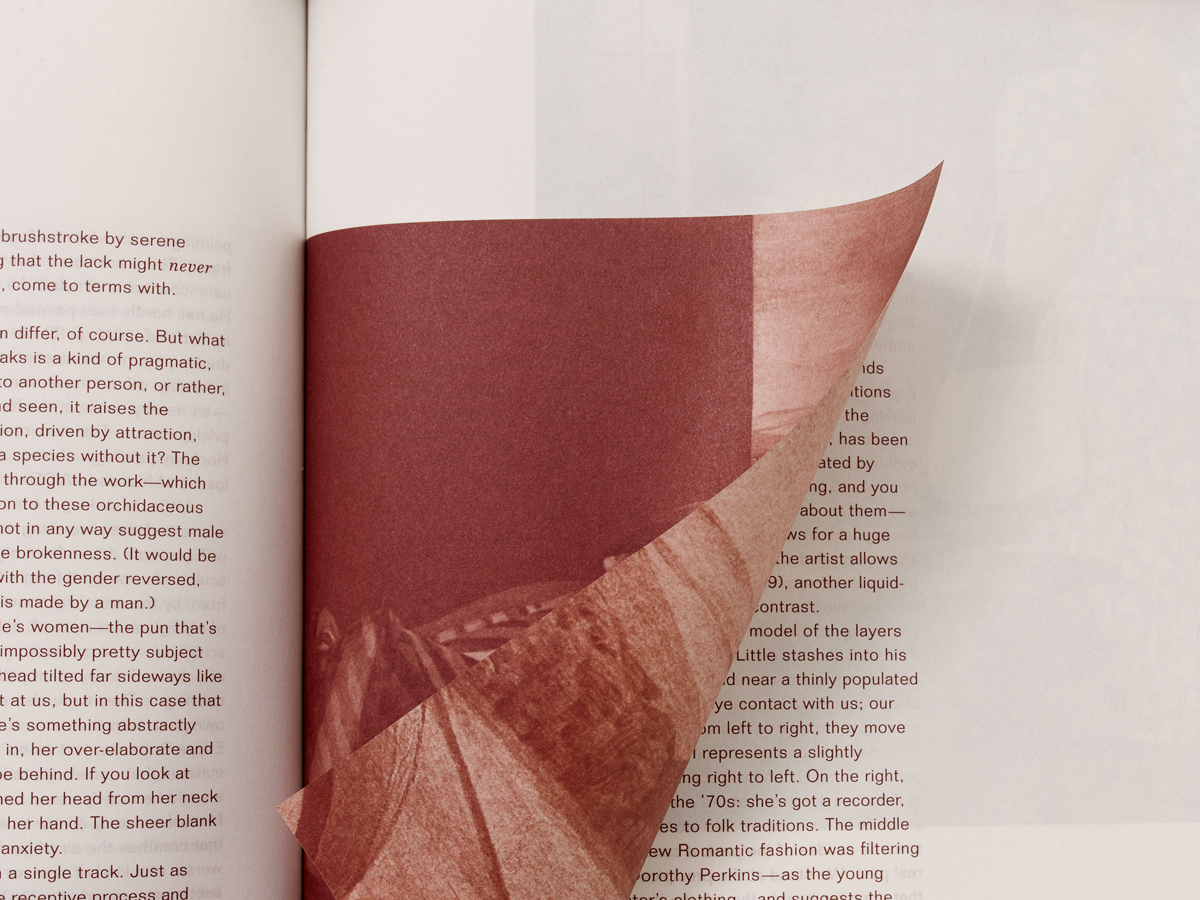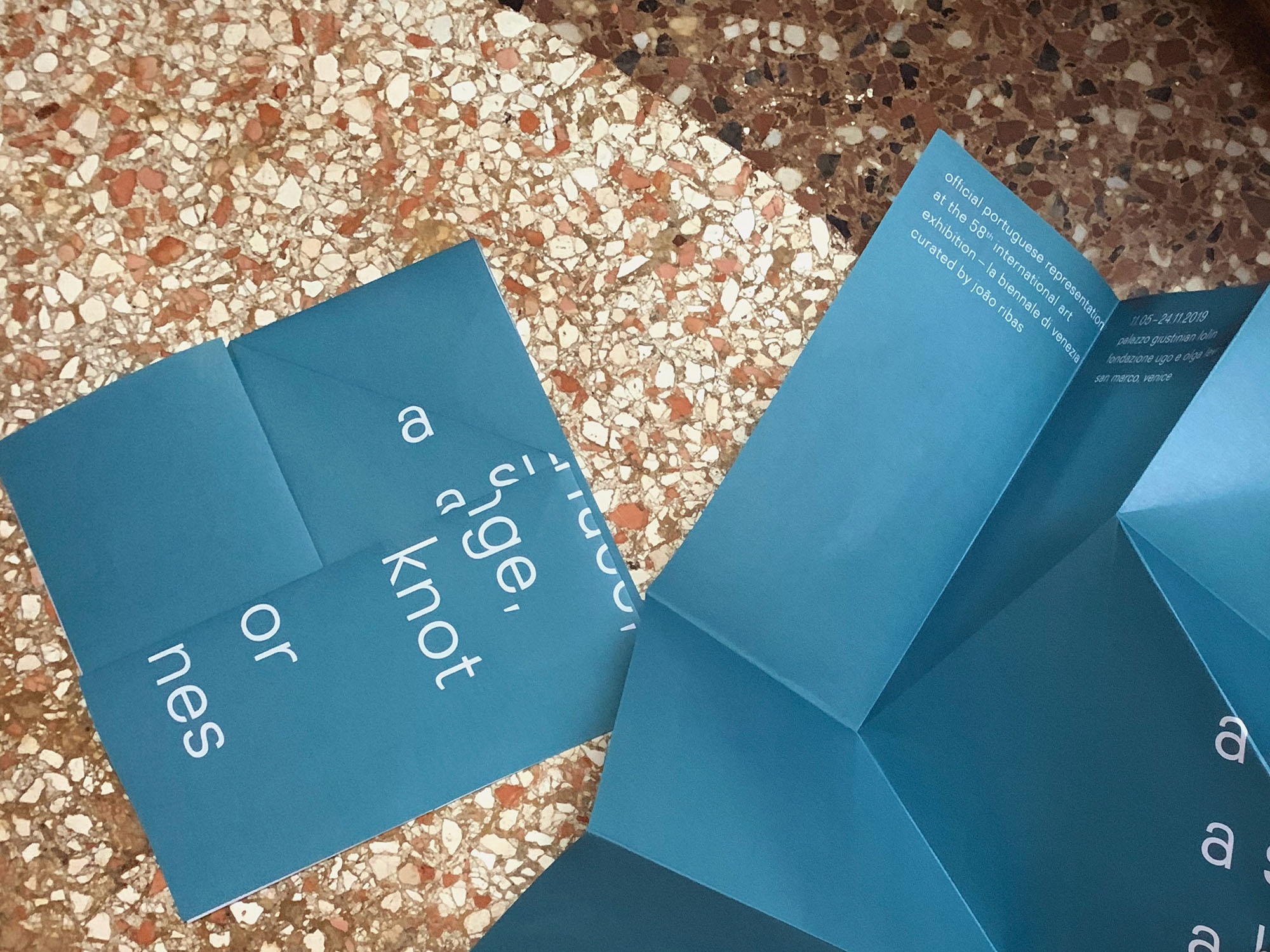
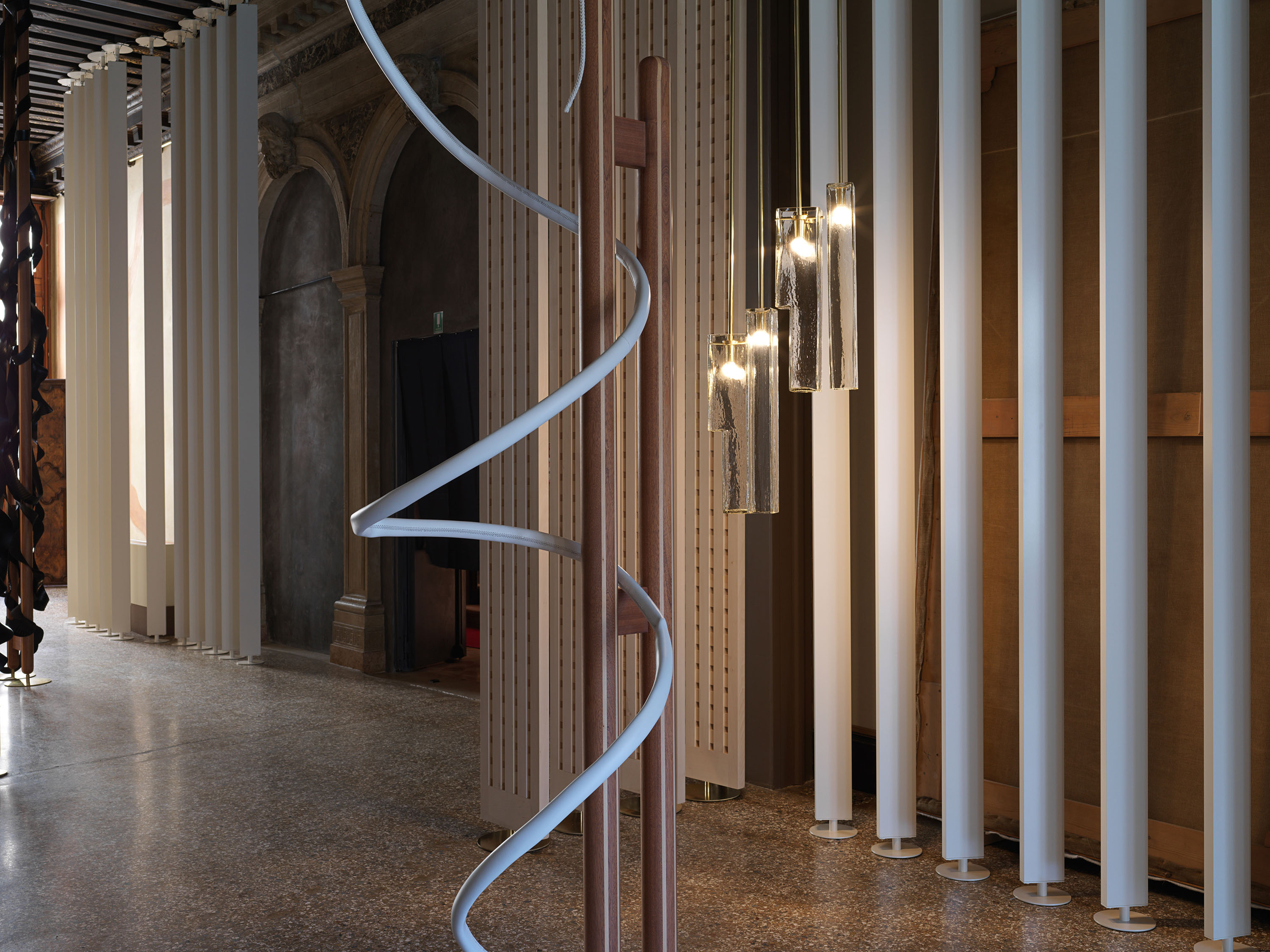
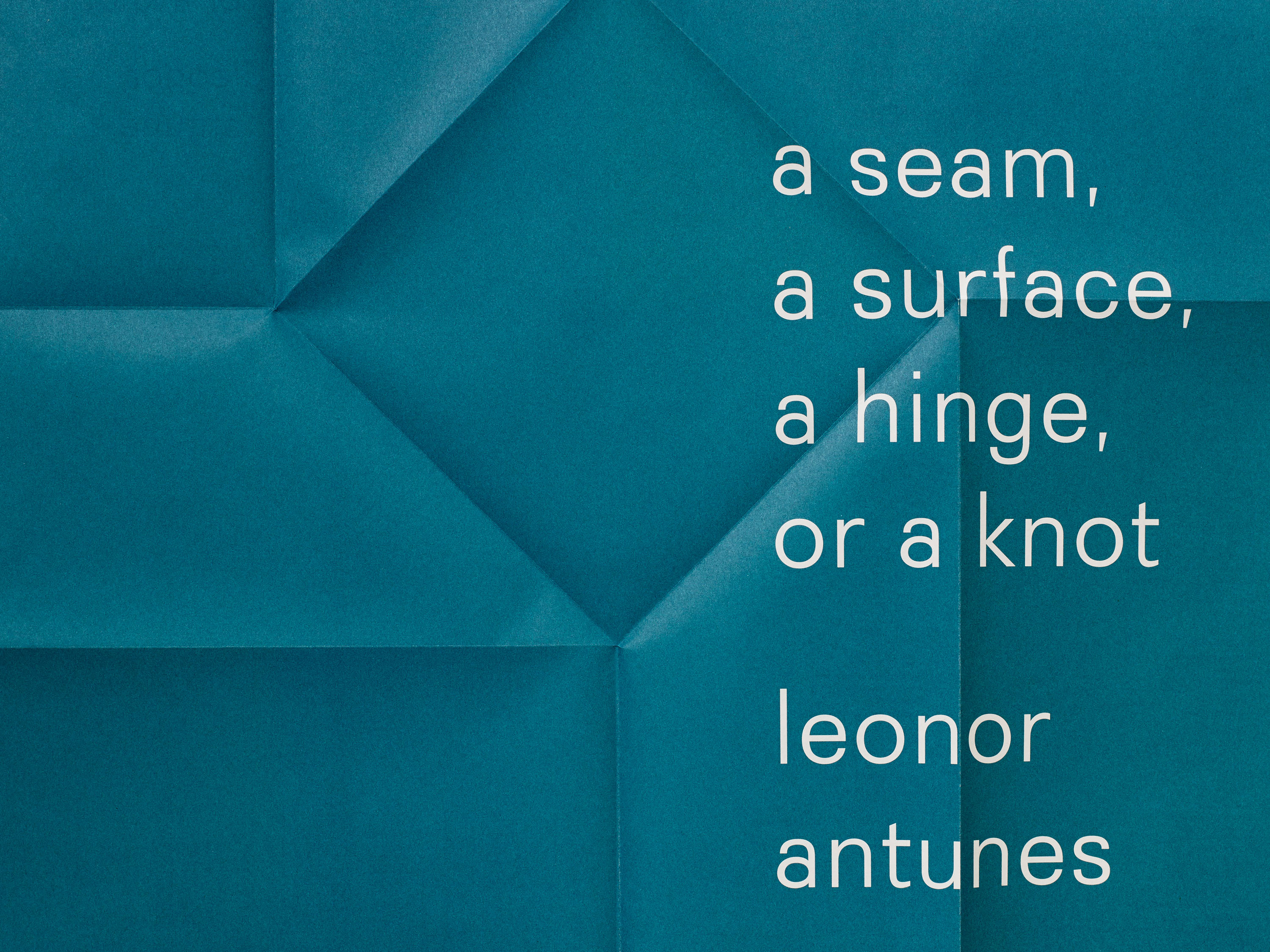


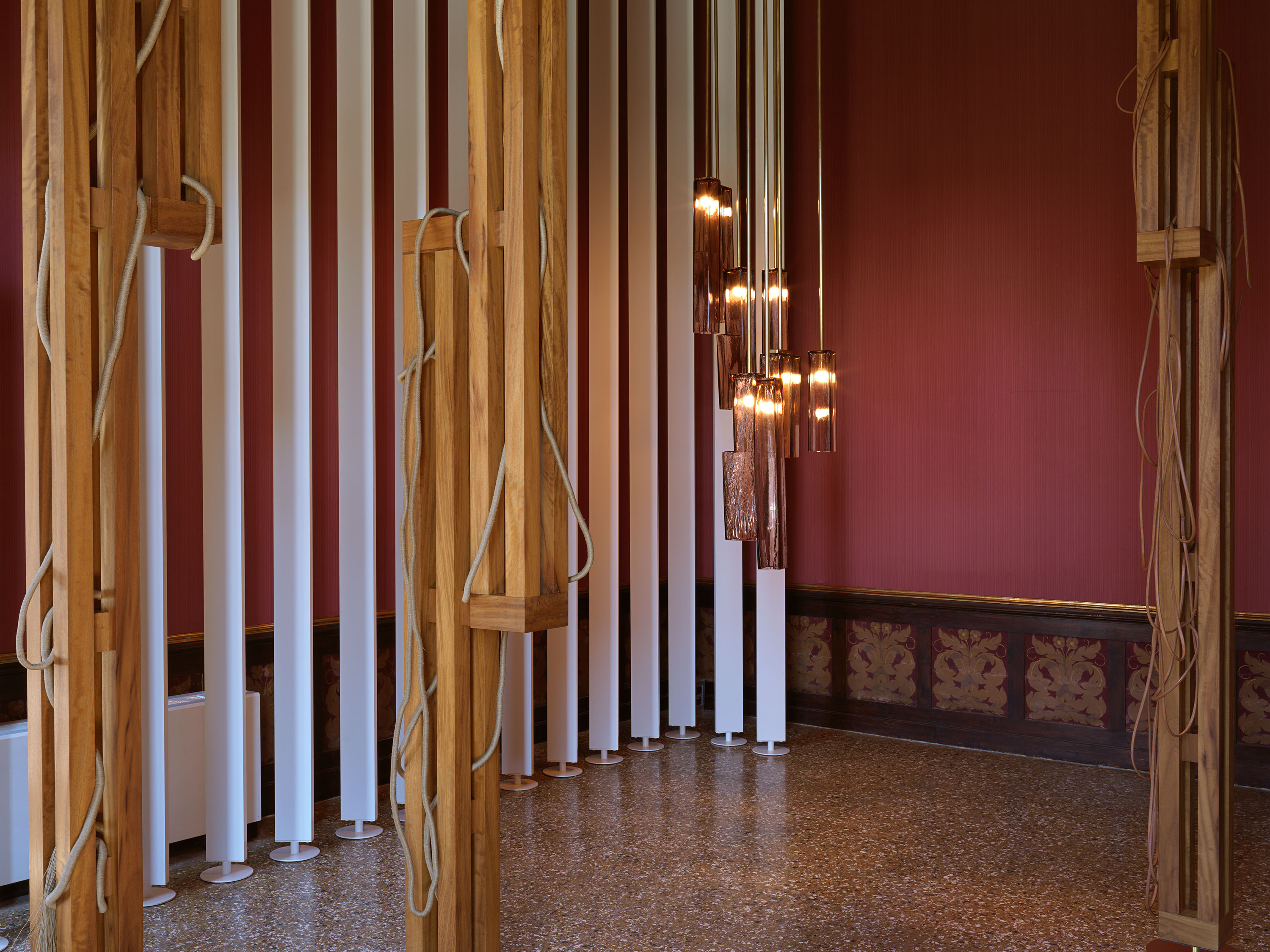
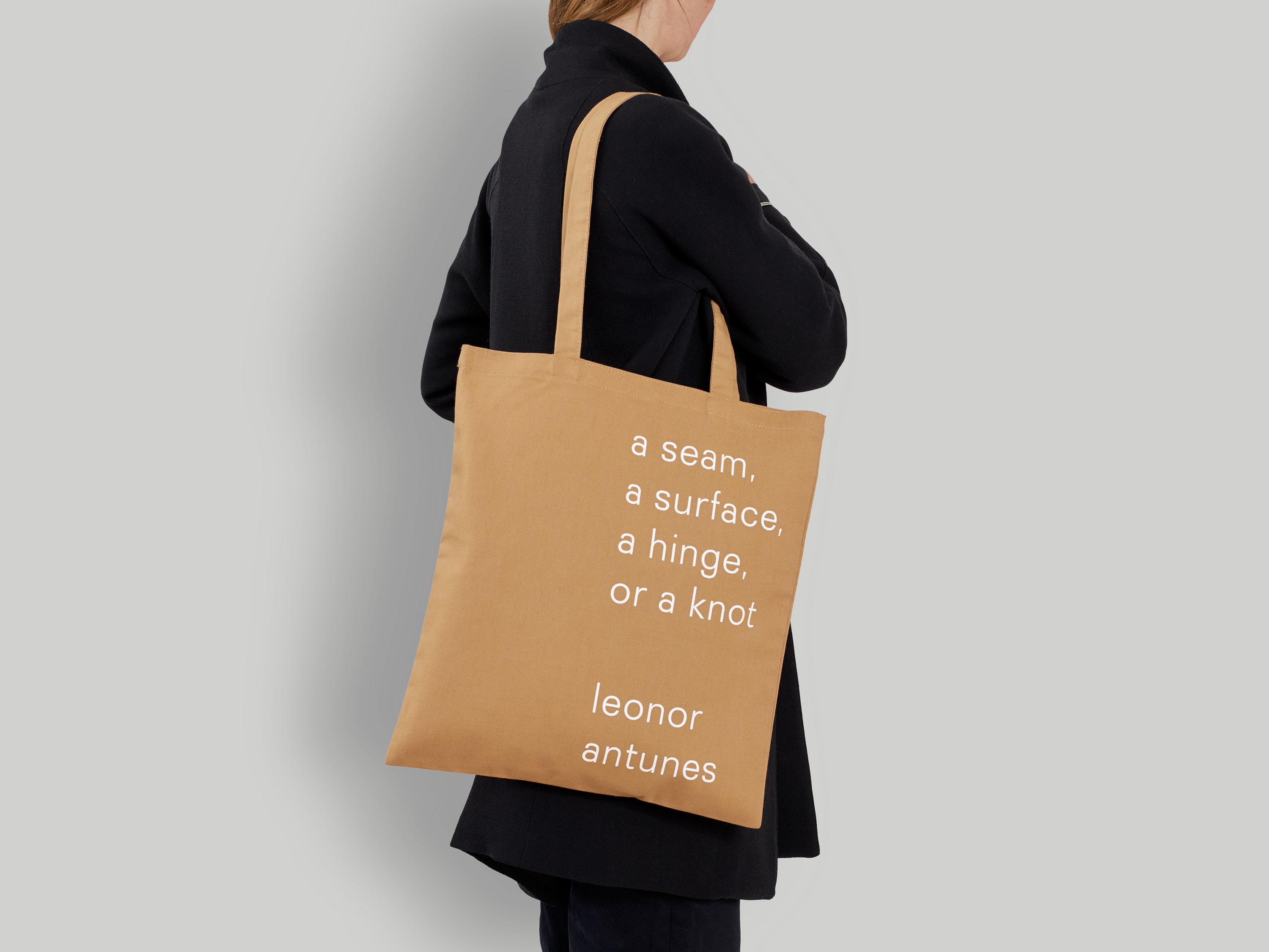
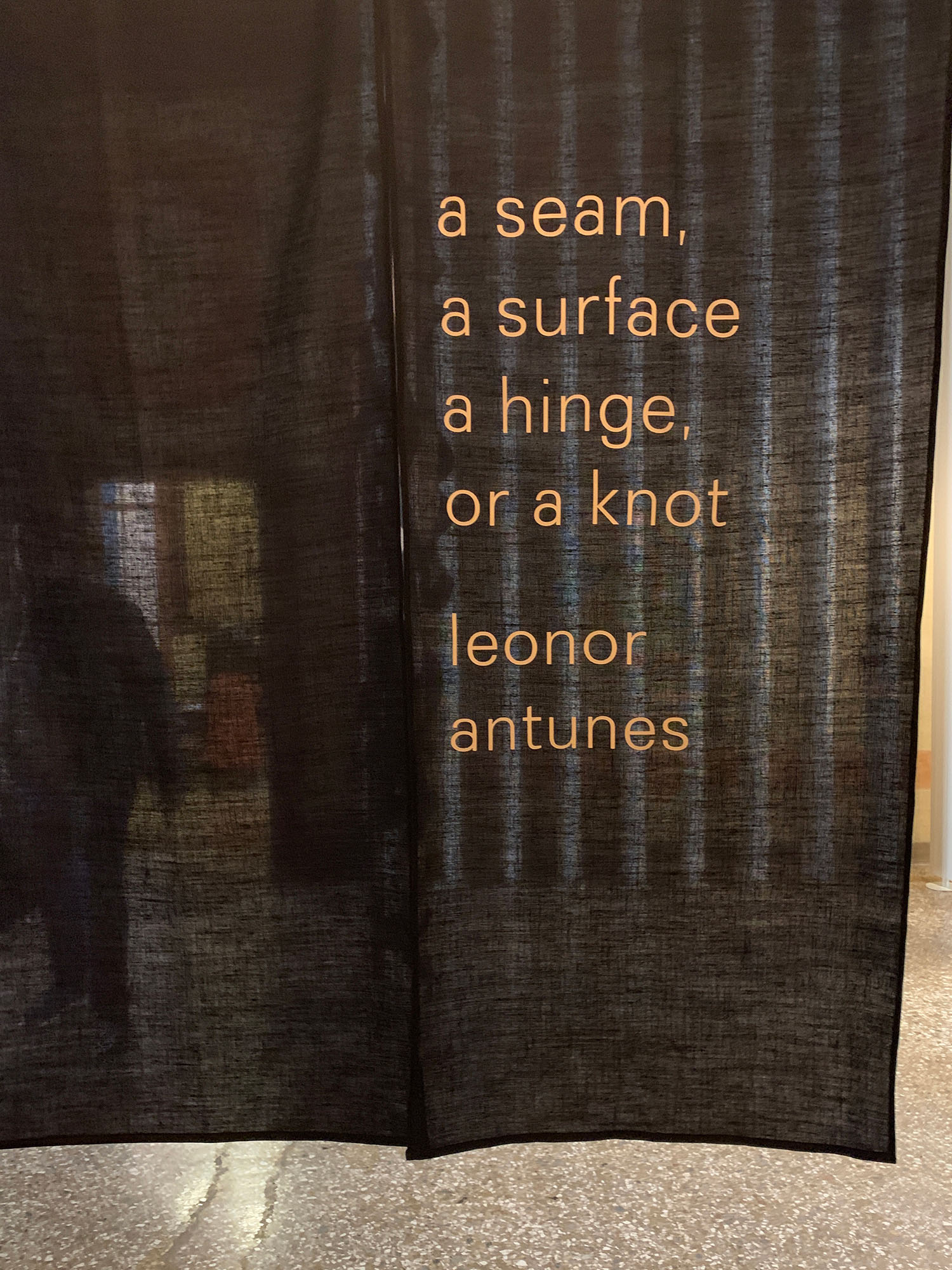
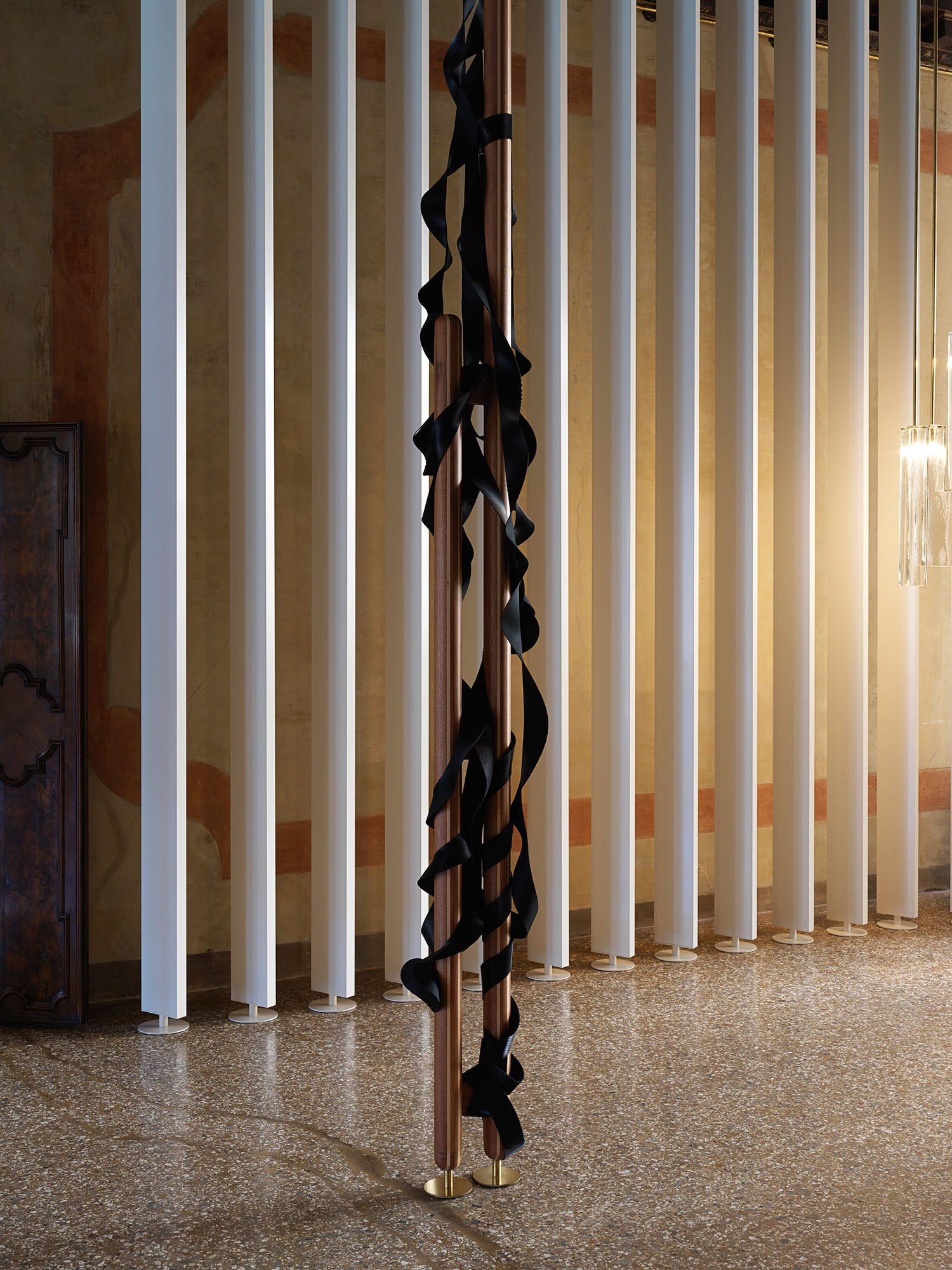
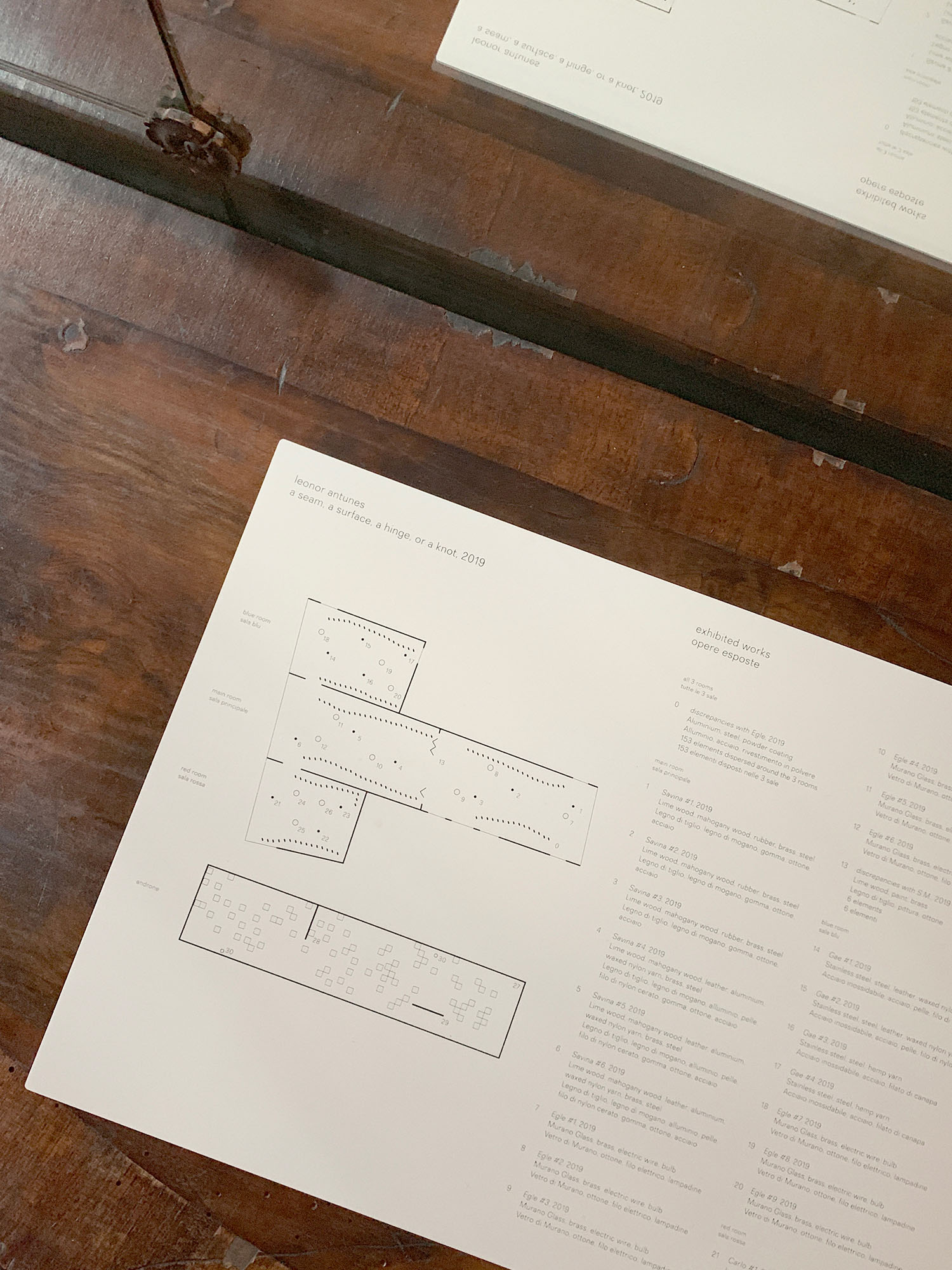
We were commissioned to design the graphic identity for the Pavilion of Portugal at the 58th International Art Exhibition – La Biennale di Venezia in 2019, for which Leonor Antunes created an installation within the Palazzo Giustinian Lolin. Antunes developed a seam, a surface, a hinge, or a knot through significant research into key figures in the cultural history of Venice, including a number of previously overlooked female artists and designers. Working with traditional makers from the region, Antunes drew together these cultural histories in an installation incorporating various forms of craftsmanship from Italy, Japan and Portugal.
We worked closely with Antunes to develop the designs as part of an ongoing dialogue, building on the working relationship we developed with the her through projects for the Whitechapel Gallery and Pirelli HangarBicocca. Our approach drew upon cultural and historical details specific to the context of the installation. We chose the typeface Recta for its relationship to the same period of Italian history that Antunes was referring to in her work.
We developed the designs across print and digital materials, as well as signage. The booklet is a poster that can be folded down like a knot, echoing ideas within Antunes’ installation.
Designed by renowned Italian typographer Aldo Novarese for the Nebiolo foundry, Recta was one of his earliest contributions to the European mid-century sans-serif type tradition.

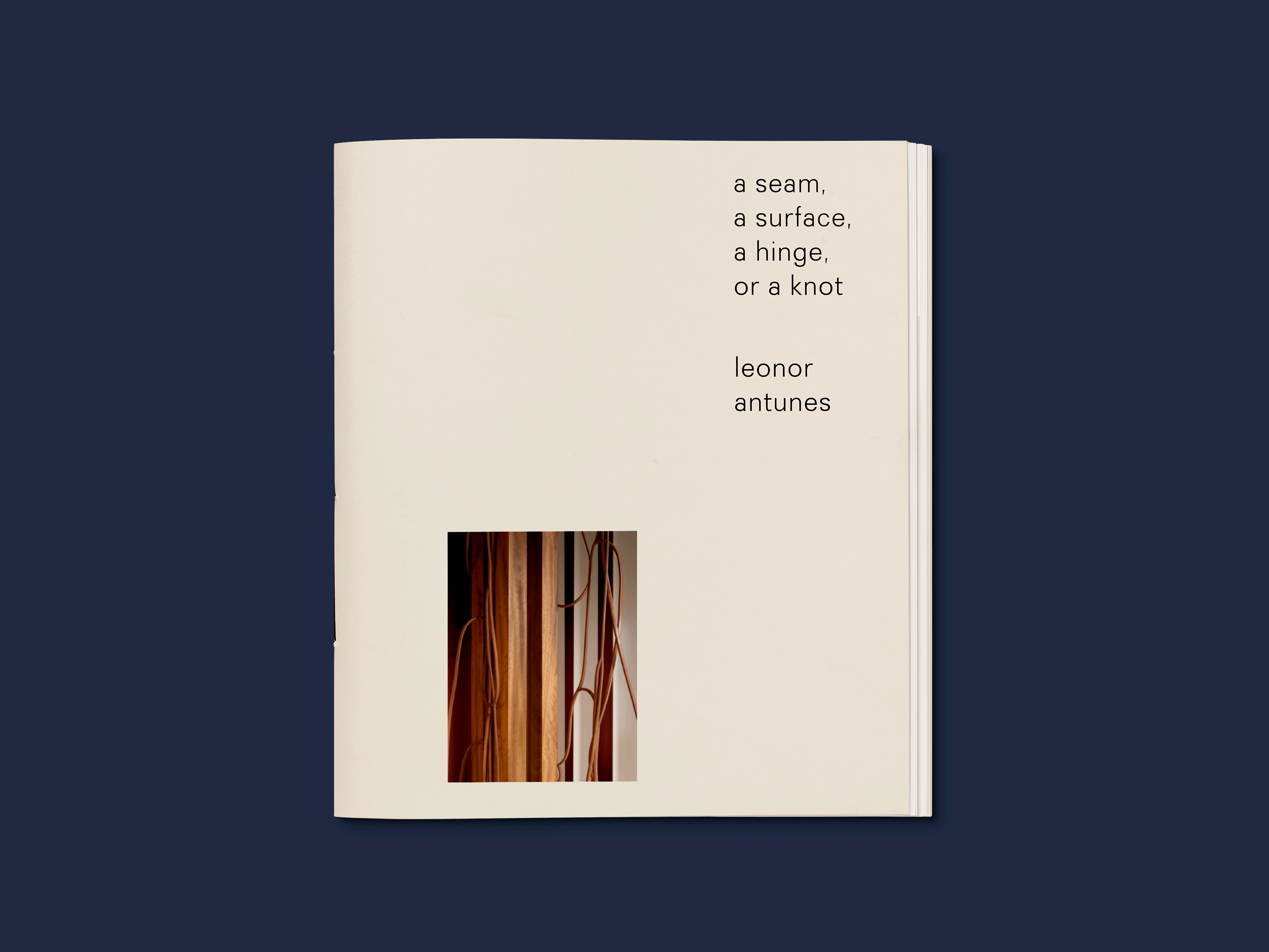
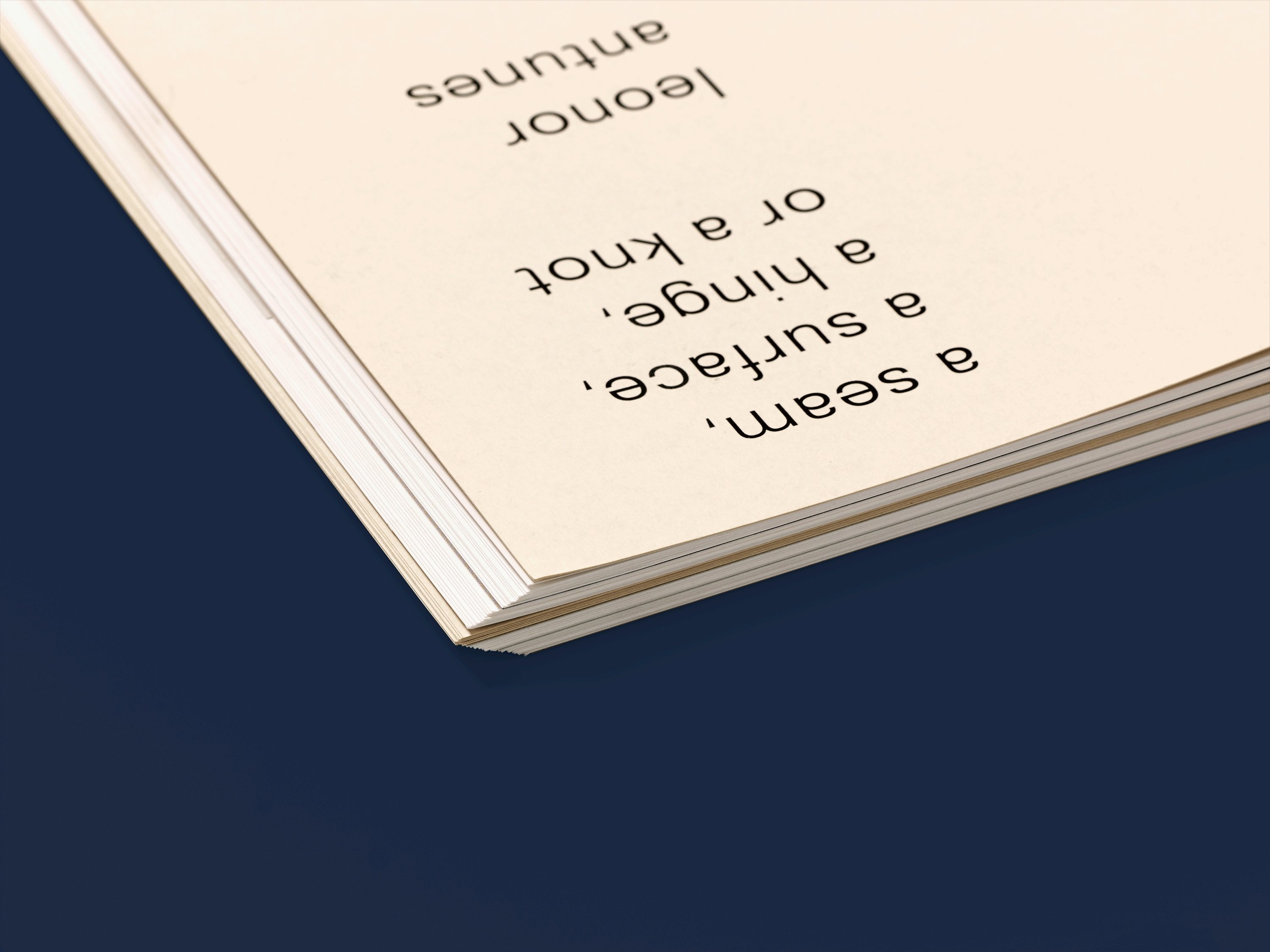
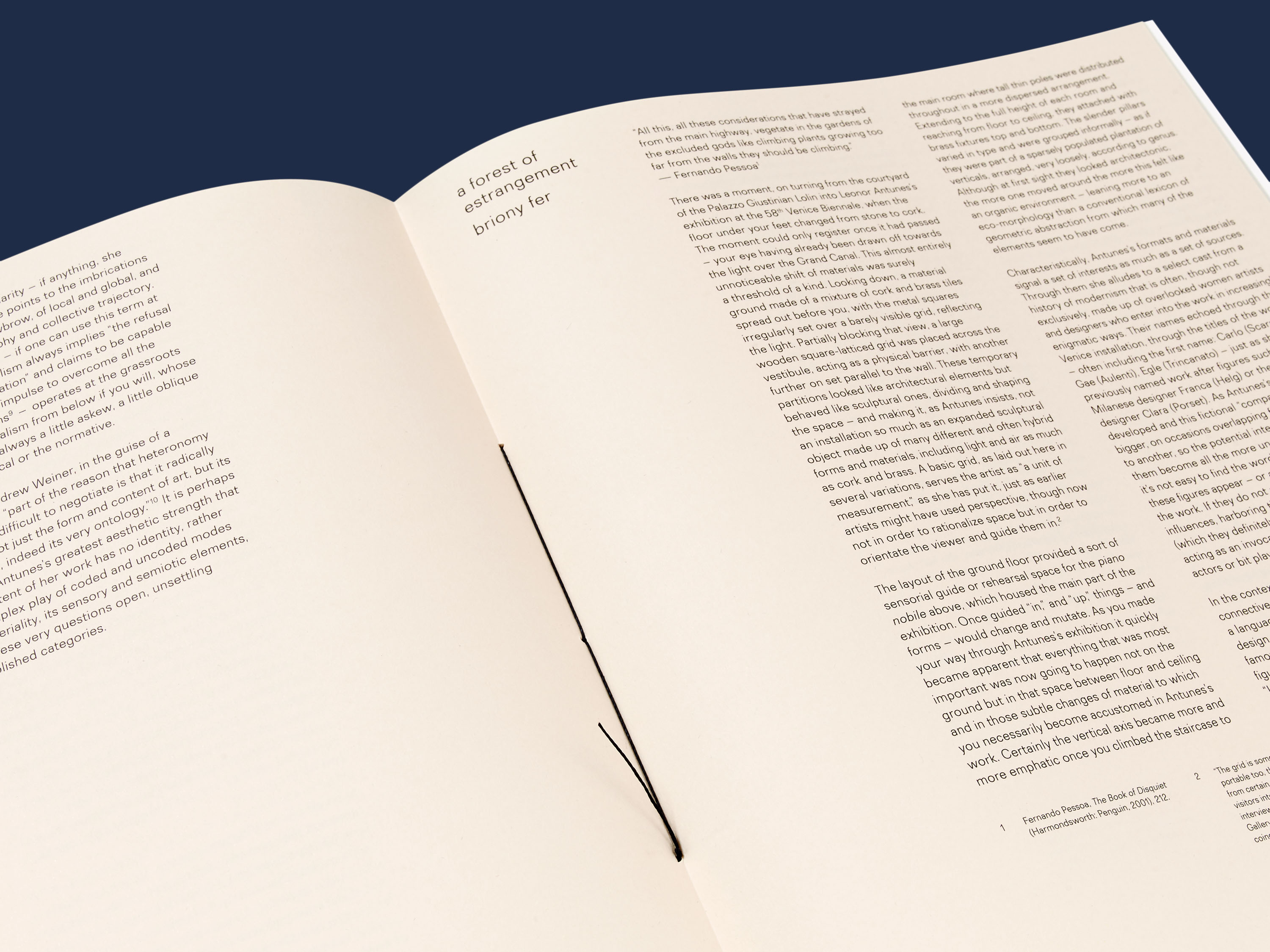
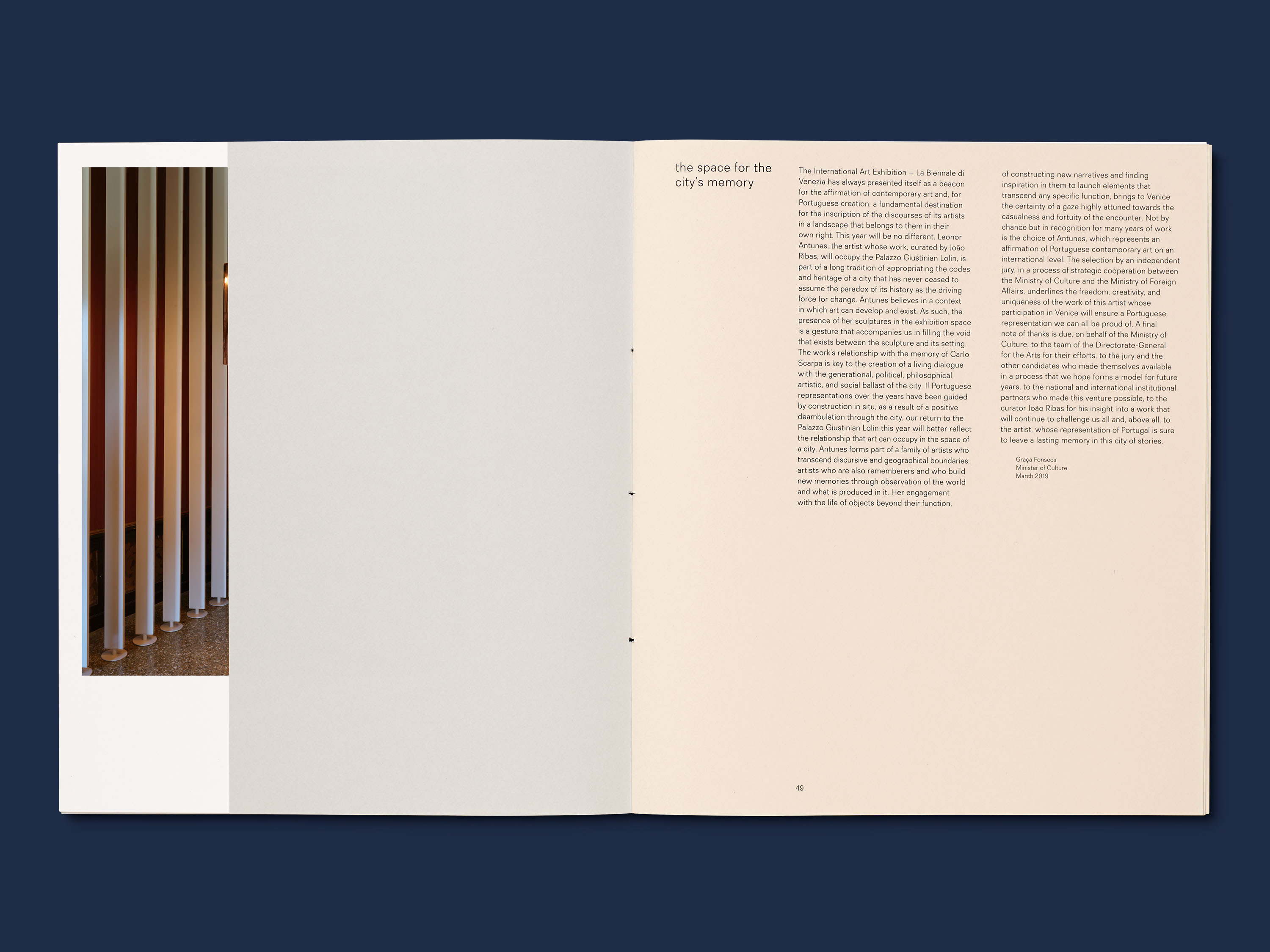
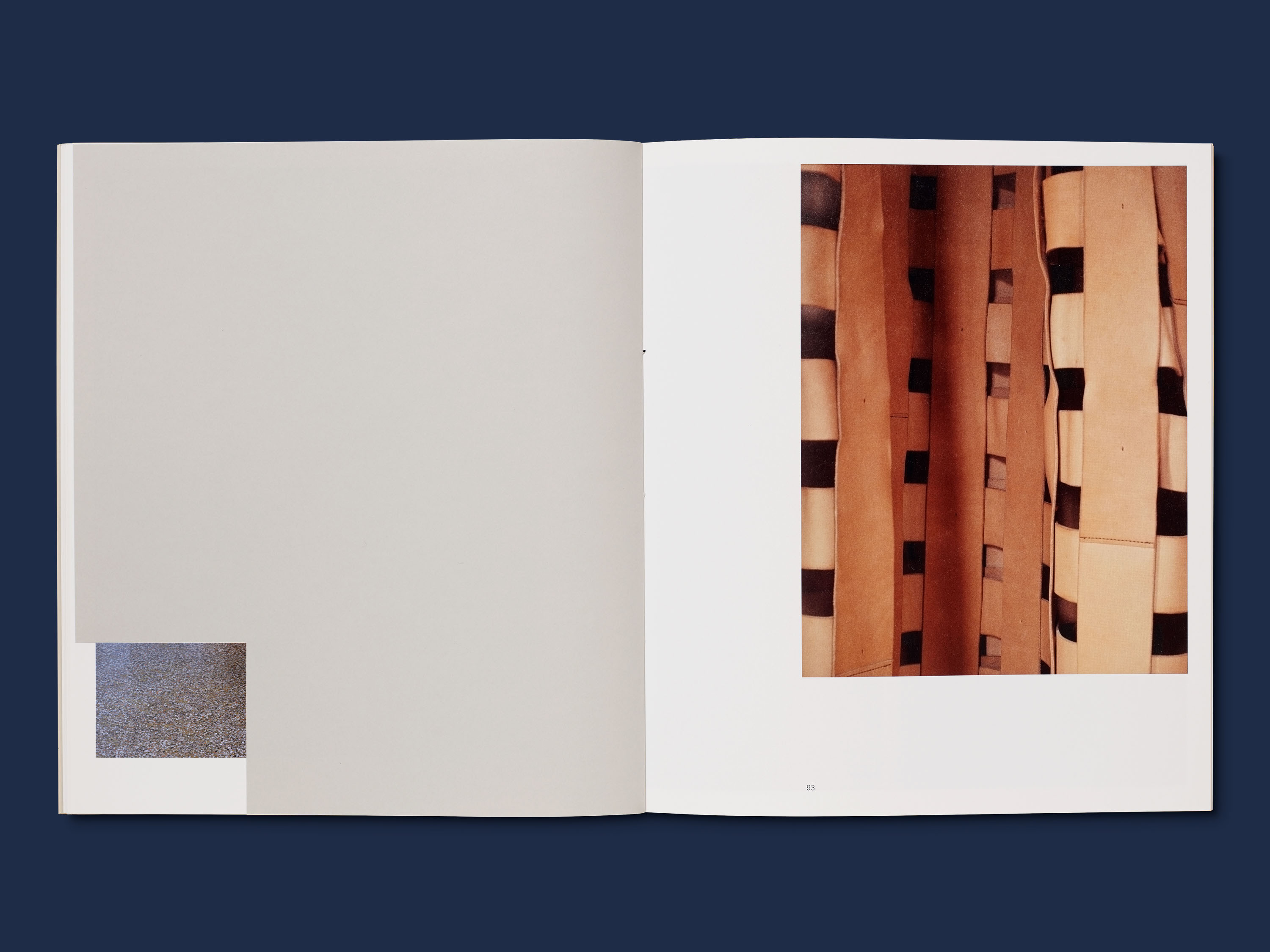
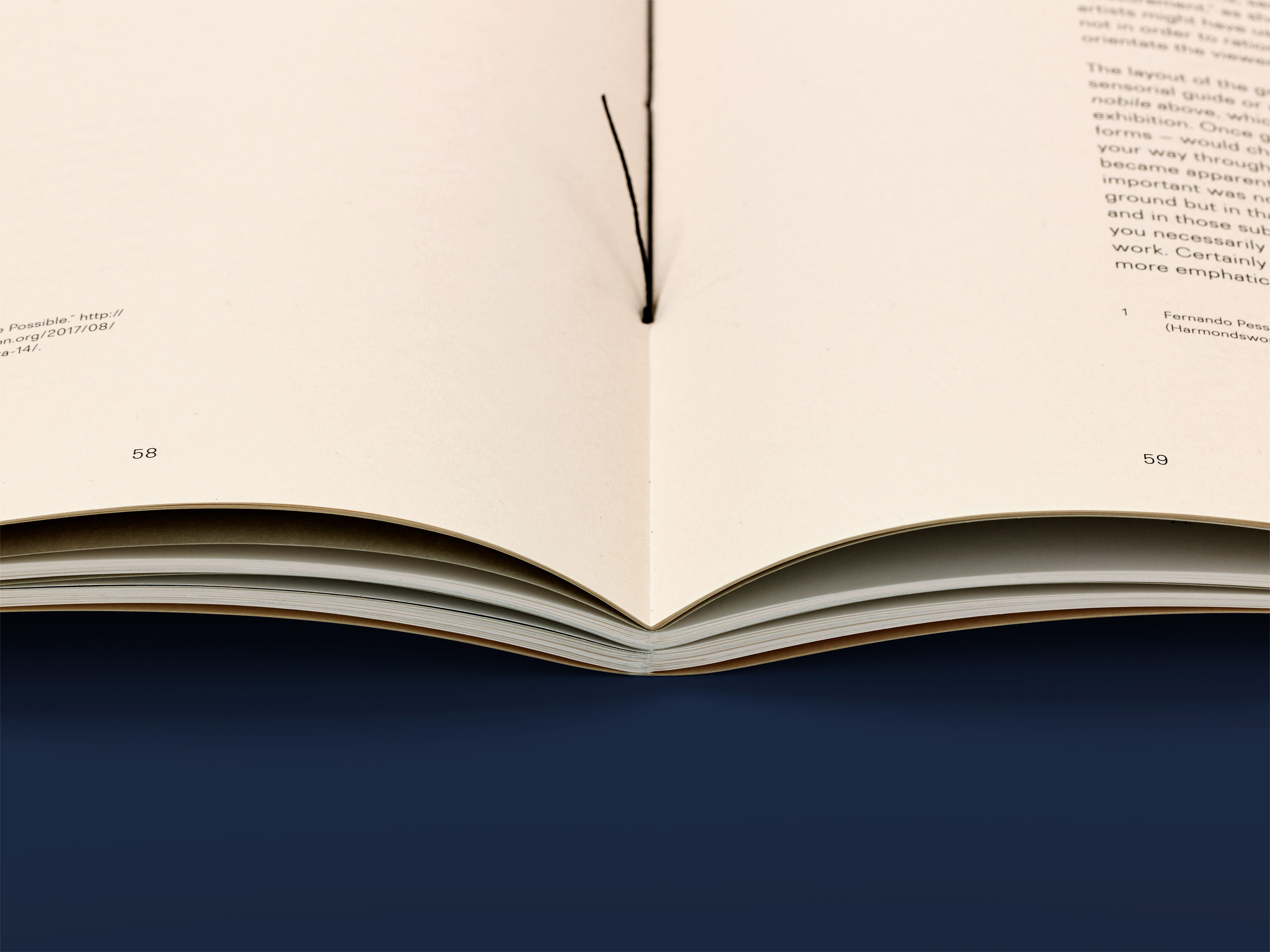
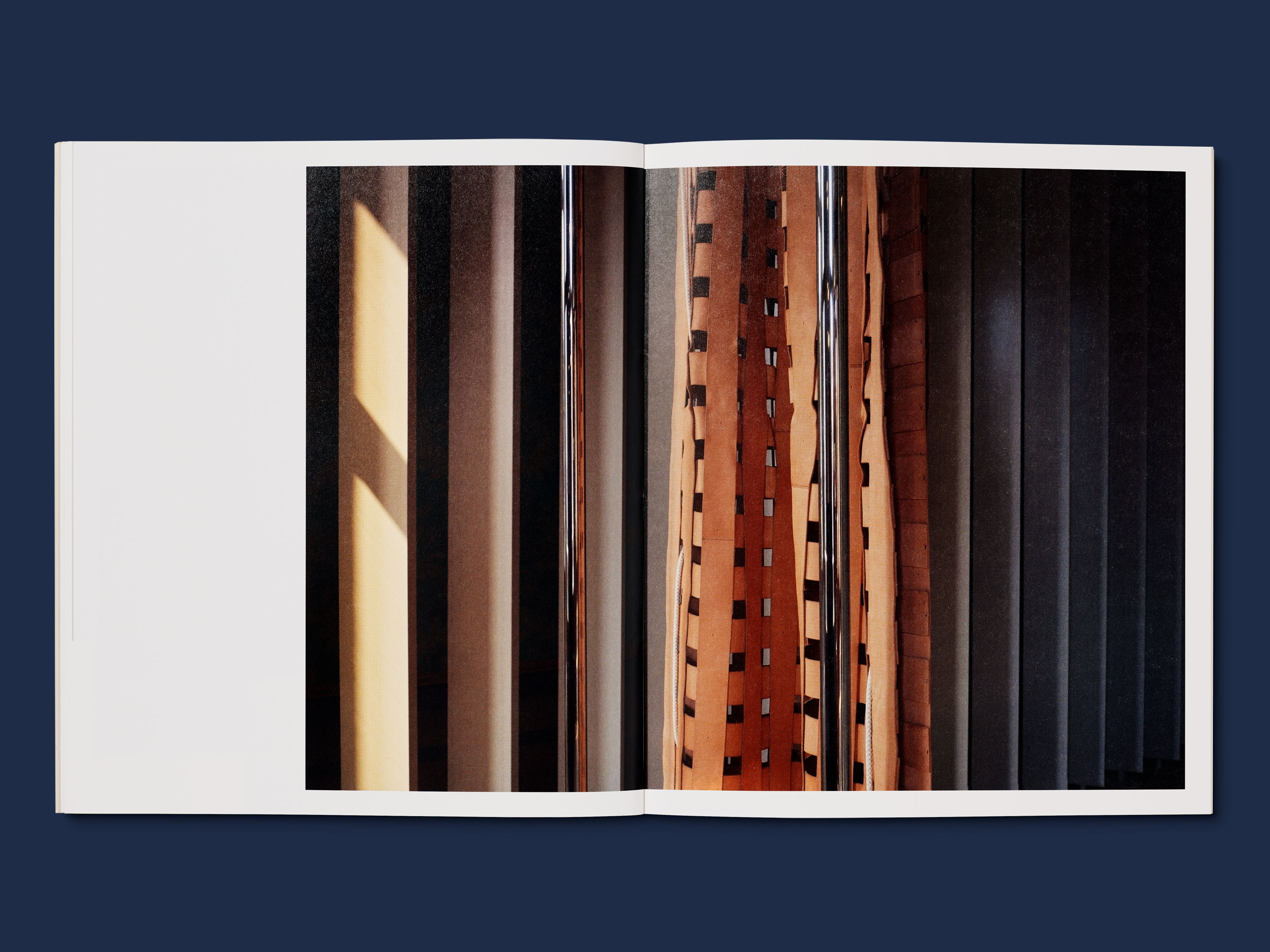
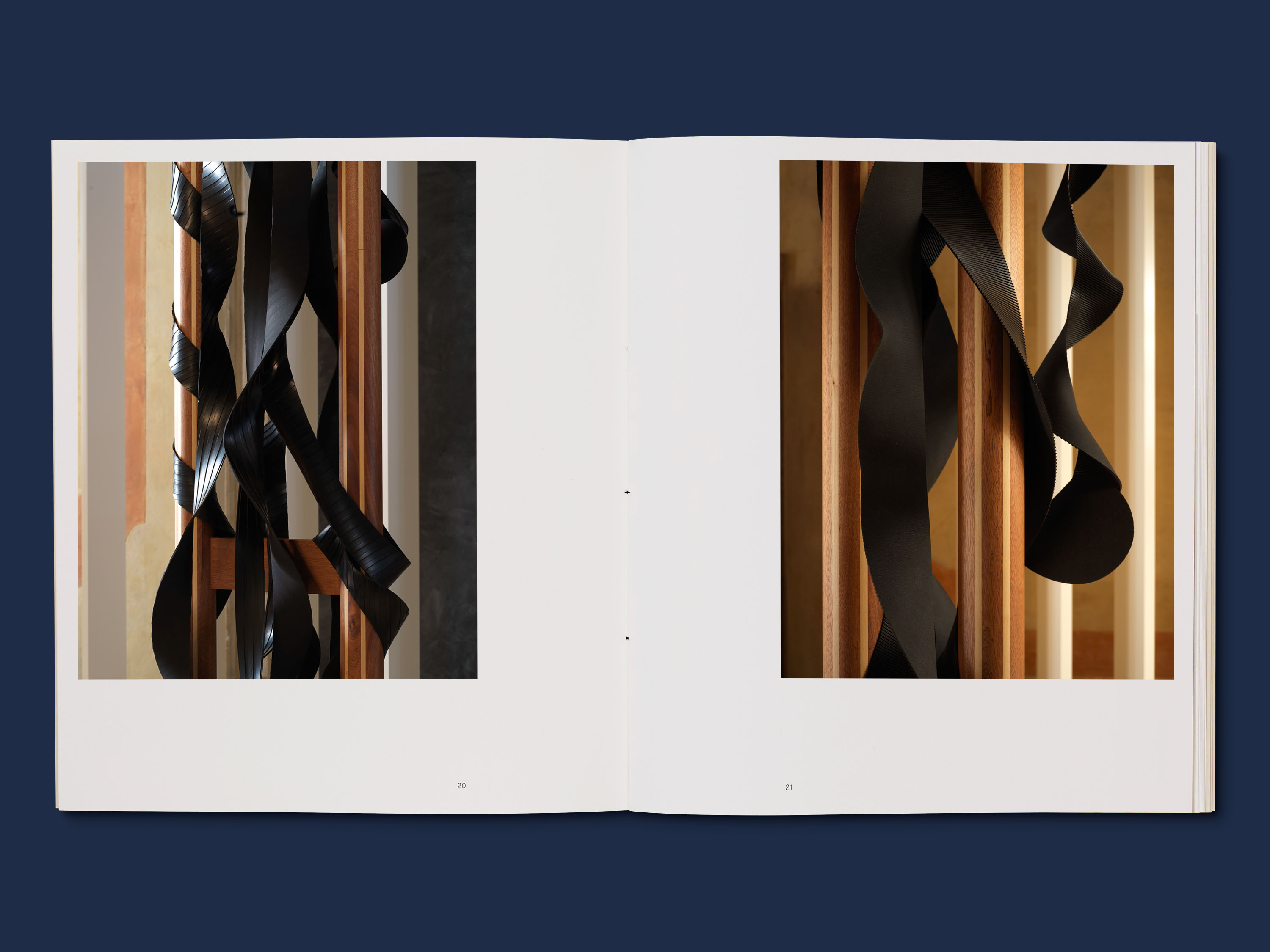
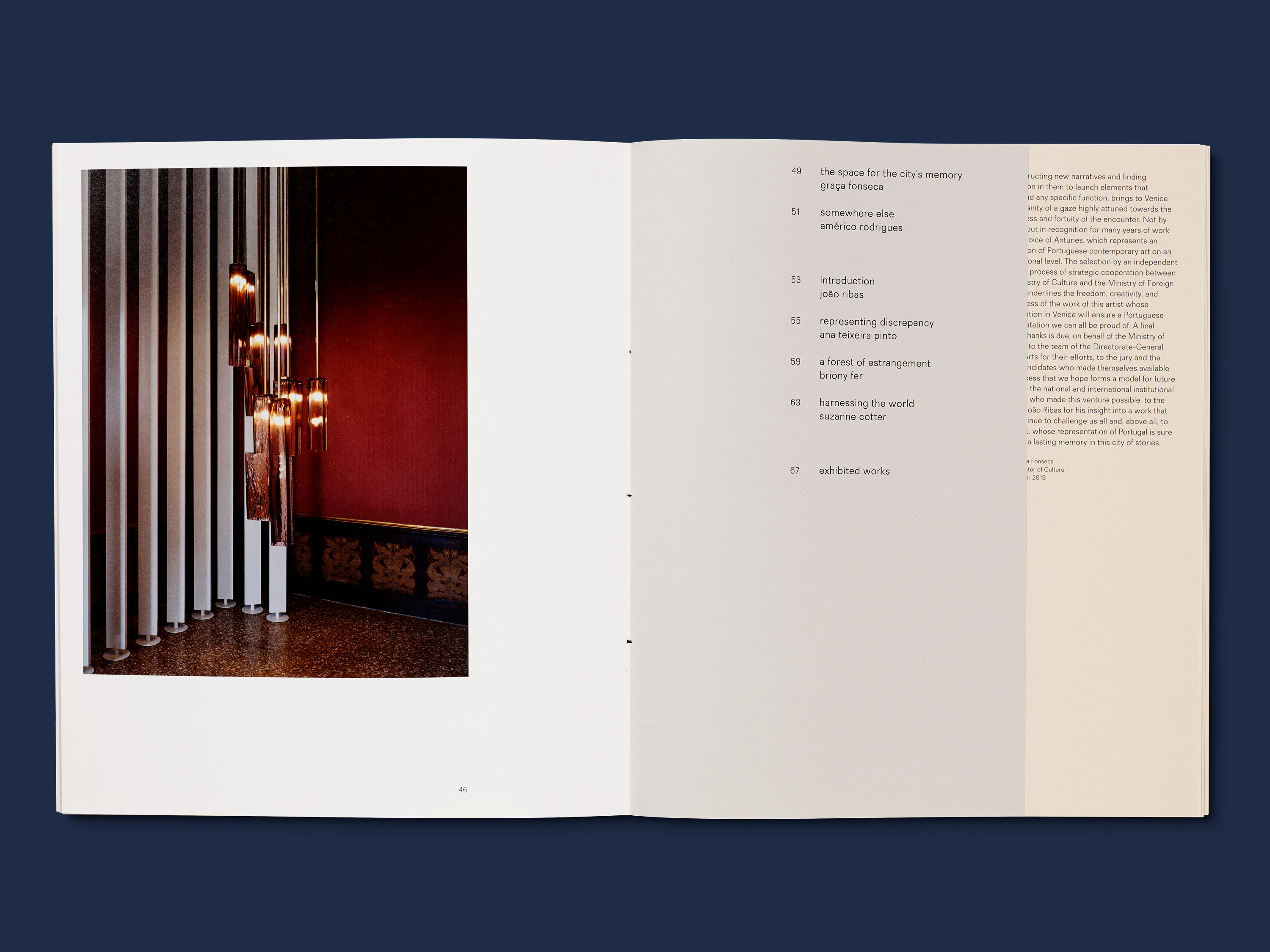

This publication accompanied Leonor Antunes' installation, a seam, a surface, a hinge, or a knot, for the Pavilion of Portugal at the 58th International Art Exhibition – La Biennale di Venezia in 2019. The catalogue's form reflects and questions the idea of the seam, surface or hinge of a book. Texts are gathered within the central pages, and the tinted papers are reflective of the raw leathers used in Antunes’ installation. The book includes two die-cut sheets as a representation of the cut leather and woodwork in the installation, which themselves make reference to the apertures within the architecture of the space in which it was held. Layouts throughout the publication react against its natural seams and surfaces.

